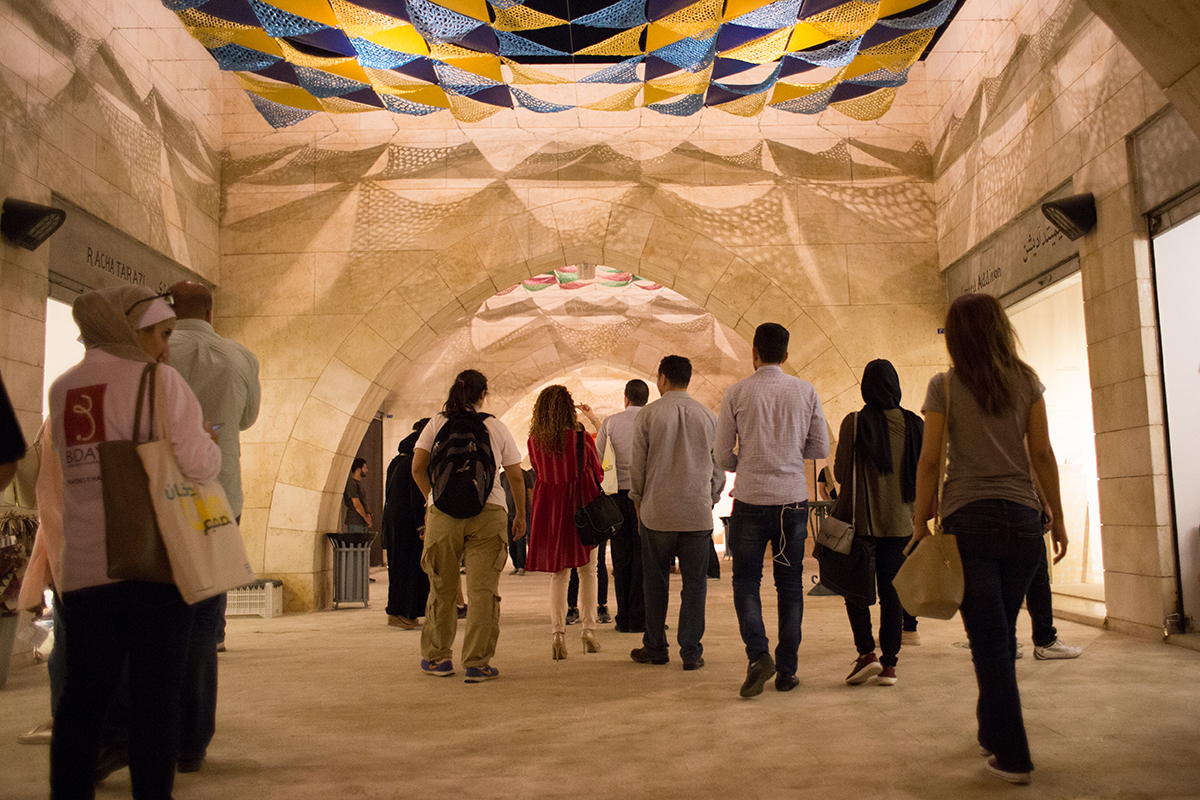


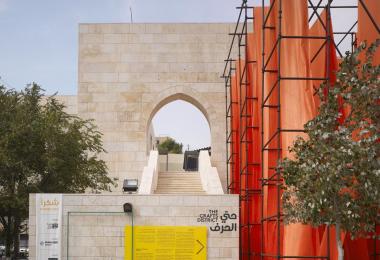
The 2016 pop-up Crafts District is an exhibition and social space set up in the abandoned Raghadan Tourist Terminal in downtown Amman.
Photo by Roland Halbe
© Amman Design Week 2016
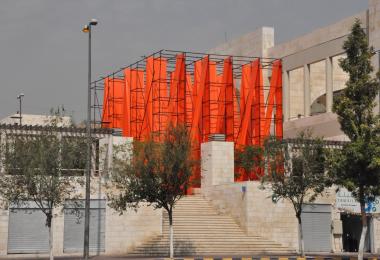
For the entrance of the Crafts District, Dina Haddadin designed a colonnade made from orange tarp and scaffolding, highlighting the unoccupied nature of the Raghadan Tourist Terminal.
The transient structure is built using 12 scaffolding towers arranged in the form of a grid and placed in the middle of the empty plaza opposite the mosque in Ras Al Ain. These pillars are spaced out to create a traditional architectural symbol of power with fragile materials.
© Amman Design Week 2016
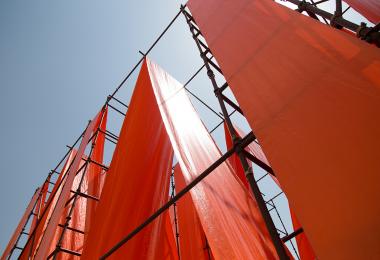
For the entrance of the Crafts District, Dina Haddadin designed a colonnade made from orange tarp and scaffolding, highlighting the unoccupied nature of the Raghadan Tourist Terminal.
The transient structure is built using 12 scaffolding towers arranged in the form of a grid and placed in the middle of the empty plaza opposite the mosque in Ras Al Ain. These pillars are spaced out to create a traditional architectural symbol of power with fragile materials.
© Amman Design Week 2016
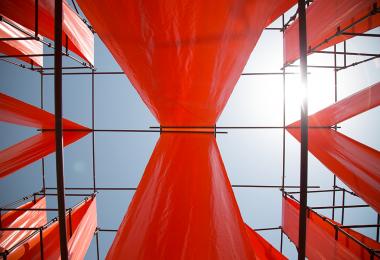
For the entrance of the Crafts District, Dina Haddadin designed a colonnade made from orange tarp and scaffolding, highlighting the unoccupied nature of the Raghadan Tourist Terminal.
The transient structure is built using 12 scaffolding towers arranged in the form of a grid and placed in the middle of the empty plaza opposite the mosque in Ras Al Ain. These pillars are spaced out to create a traditional architectural symbol of power with fragile materials.
© Amman Design Week 2016
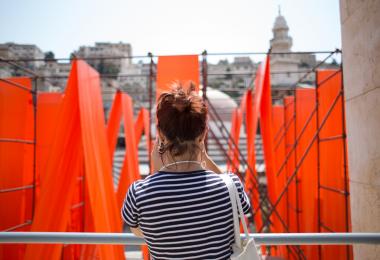
For the entrance of the Crafts District, Dina Haddadin designed a colonnade made from orange tarp and scaffolding, highlighting the unoccupied nature of the Raghadan Tourist Terminal.
The transient structure is built using 12 scaffolding towers arranged in the form of a grid and placed in the middle of the empty plaza opposite the mosque in Ras Al Ain. These pillars are spaced out to create a traditional architectural symbol of power with fragile materials.
© Amman Design Week 2016
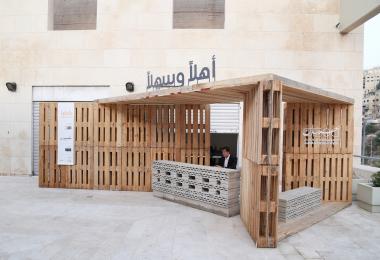
An information desk was fashioned out of concrete block and upcycled wooden pallets.
© Amman Design Week 2016
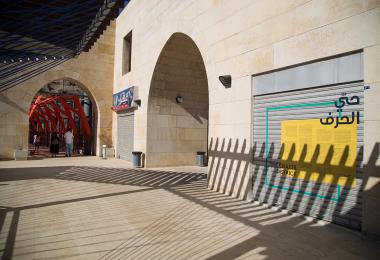
The Raghadan Tourist Terminal was built in 2008 and never occupied. The Crafts District exhibition was a pop-up exhibition that intended to breathe life into the space with a series of installations and exhibitions.
© Amman Design Week 2016
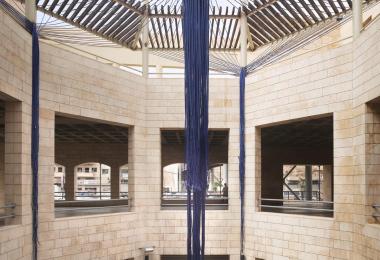
3800 m long ropes are weaved, interlocked, and juxtaposed through the existing structure of the pergola that demarks the main atrium at the Raghadan Tourist Terminal.
The installation was designed to mimic the typical loom beater, taking the form of a metal bar that holds all threads in place with a metal insert known as a reed, which contains a number of slots for the threads to pass through. The order and rhythm with which the ropes were woven onto the existing structure formed a spatial loom that connects all floors with the weight of the beater.
The loom is a symbol for the "making" in any craft; a sculpture that stands against the anonymity of mass production and corporate labor, and stands for the personalized production process, giving power back to the man-made objects, the working hands, and the individuals.
Photo by Roland Halbe
© Amman Design Week 2016
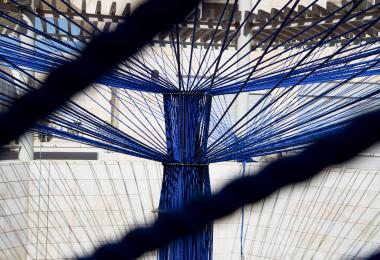
3800 m long ropes are weaved, interlocked, and juxtaposed through the existing structure of the pergola that demarks the main atrium at the Raghadan Tourist Terminal.
The installation was designed to mimic the typical loom beater, taking the form of a metal bar that holds all threads in place with a metal insert known as a reed, which contains a number of slots for the threads to pass through. The order and rhythm with which the ropes were woven onto the existing structure formed a spatial loom that connects all floors with the weight of the beater.
The loom is a symbol for the "making" in any craft; a sculpture that stands against the anonymity of mass production and corporate labor, and stands for the personalized production process, giving power back to the man-made objects, the working hands, and the individuals.
© Amman Design Week 2016
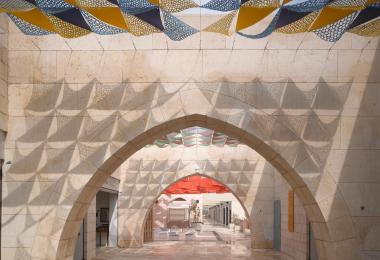
Inspired by our local visual patterns, a modular triangular pattern was generated to build each canopy.
Each piece was hand-knitted by a community of women in the Gaza camp in Jerash. 800 triangles are knitted using a special crochet technique; a derelict craft that is dying and slowly disappearing, as a result of the demanding consumerism we are facing. The colorful threads are created using collected waste plastic bags.
The 10 canopies are a symbol of empowerment and self-expression through craft and creativity. They are a collective attempt to relocate personal meaning in an indifferent world through fragments that weave together the body of each canopy. It is a social performative piece that reflects values of community, locality, and sustainability.
The canopies were done in collaboration with Kees Chic.
Photo by Roland Halbe
© Amman Design Week 2016
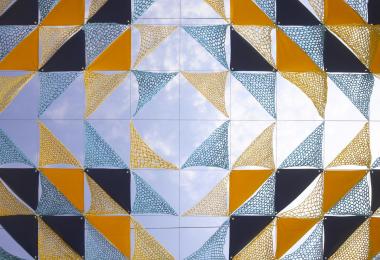
Inspired by our local visual patterns, a modular triangular pattern was generated to build each canopy.
Each piece was hand-knitted by a community of women in the Gaza camp in Jerash. 800 triangles are knitted using a special crochet technique; a derelict craft that is dying and slowly disappearing, as a result of the demanding consumerism we are facing. The colorful threads are created using collected waste plastic bags.
The 10 canopies are a symbol of empowerment and self-expression through craft and creativity. They are a collective attempt to relocate personal meaning in an indifferent world through fragments that weave together the body of each canopy. It is a social performative piece that reflects values of community, locality, and sustainability.
The canopies were done in collaboration with Kees Chic.
Photo by Roland Halbe
© Amman Design Week 2016
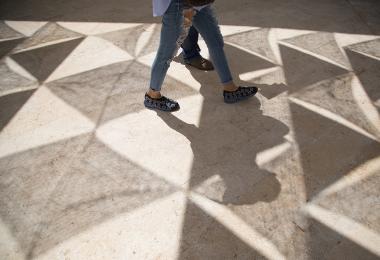
Inspired by our local visual patterns, a modular triangular pattern was generated to build each canopy.
Each piece was hand-knitted by a community of women in the Gaza camp in Jerash. 800 triangles are knitted using a special crochet technique; a derelict craft that is dying and slowly disappearing, as a result of the demanding consumerism we are facing. The colorful threads are created using collected waste plastic bags.
The 10 canopies are a symbol of empowerment and self-expression through craft and creativity. They are a collective attempt to relocate personal meaning in an indifferent world through fragments that weave together the body of each canopy. It is a social performative piece that reflects values of community, locality, and sustainability.
The canopies were done in collaboration with Kees Chic.
© Amman Design Week 2016
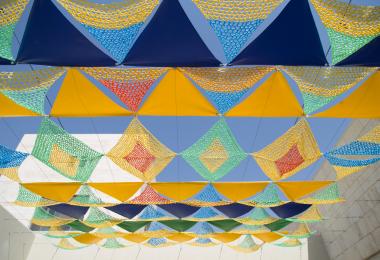
Inspired by our local visual patterns, a modular triangular pattern was generated to build each canopy.
Each piece was hand-knitted by a community of women in the Gaza camp in Jerash. 800 triangles are knitted using a special crochet technique; a derelict craft that is dying and slowly disappearing, as a result of the demanding consumerism we are facing. The colorful threads are created using collected waste plastic bags.
The 10 canopies are a symbol of empowerment and self-expression through craft and creativity. They are a collective attempt to relocate personal meaning in an indifferent world through fragments that weave together the body of each canopy. It is a social performative piece that reflects values of community, locality, and sustainability.
The canopies were done in collaboration with Kees Chic.
© Amman Design Week 2016
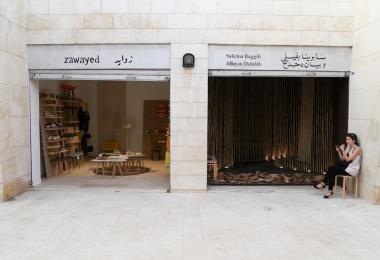
© Amman Design Week 2016
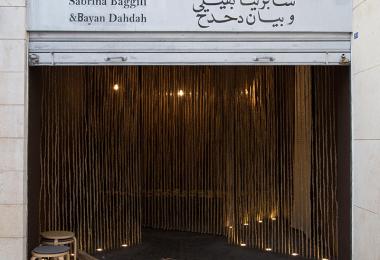
This project was done in collaboration with Jordan River Foundation’s Wadi Al Rayan Project, as part of a designer-craftsperson collaboration.
The piece revives a play-on-words Arabic tongue twister, aptly named “Kheit Halfa ala Hait Khalfa”, in reference to halfa grass and banana tree leaves that they use in their installation.
© Amman Design Week 2016
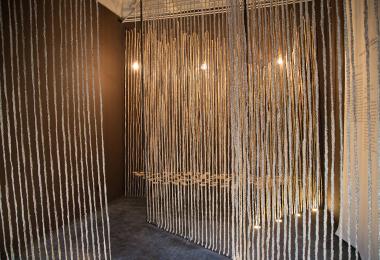
This project was done in collaboration with Jordan River Foundation’s Wadi Al Rayan Project, as part of a designer-craftsperson collaboration.
The piece revives a play-on-words Arabic tongue twister, aptly named “Kheit Halfa ala Hait Khalfa”, in reference to halfa grass and banana tree leaves that they use in their installation.
© Amman Design Week 2016
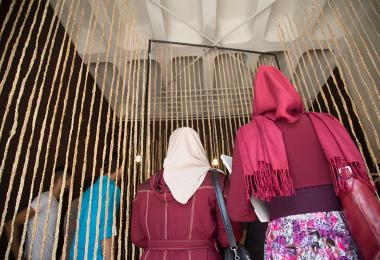
This project was done in collaboration with Jordan River Foundation’s Wadi Al Rayan Project, as part of a designer-craftsperson collaboration.
The piece revives a play-on-words Arabic tongue twister, aptly named “Kheit Halfa ala Hait Khalfa”, in reference to halfa grass and banana tree leaves that they use in their installation.
© Amman Design Week 2016
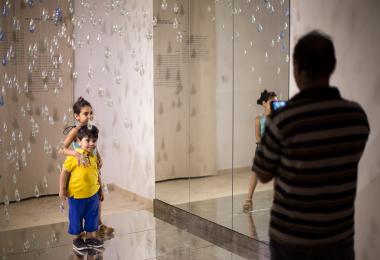
This design installation is a collaboration with one of the very few remaining local hand-blown glass manufacturers, done as part of a craftsperson-designer collaboration.
Mimicking the effect of rainfall, the powerful installation consists of a large number of droplets, which is a shape that highlights the fluidity and elasticity of hand blown glass.
© Amman Design Week 2016
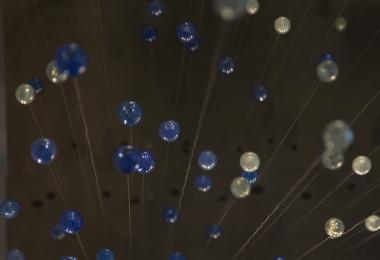
This design installation is a collaboration with one of the very few remaining local hand-blown glass manufacturers, done as part of a craftsperson-designer collaboration.
Mimicking the effect of rainfall, the powerful installation consists of a large number of droplets, which is a shape that highlights the fluidity and elasticity of hand blown glass.
© Amman Design Week 2016
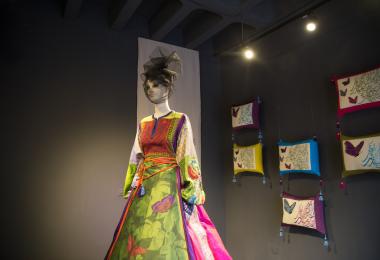
Touched by the colorful movement in Nizar Qabbani’s Poem “Wa Dawarna Al Qamar” a timeless collection comes to life with embroidered dresses, home accessories, and more.
© Amman Design Week 2016
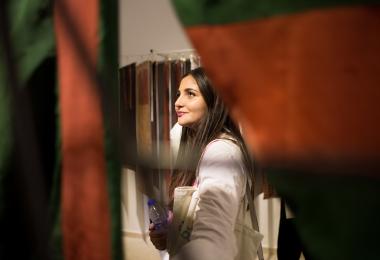
The TIRAZ Walk-In Closet offers a mini portrait of the TIRAZ - Widad Kawar Home for the Arab Dress museum.
The traditional dresses, which are from Jordan, Palestine and Syria, are depicted in actual-size photos and hung from curtain rails.
The form allows visitors to browse and learn about each dress’ background, age, and region of origin.
© Amman Design Week 2016
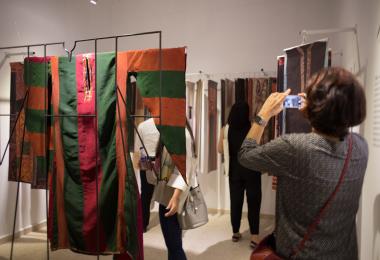
The TIRAZ Walk-In Closet offers a mini portrait of the TIRAZ - Widad Kawar Home for the Arab Dress museum.
The traditional dresses, which are from Jordan, Palestine and Syria, are depicted in actual-size photos and hung from curtain rails.
The form allows visitors to browse and learn about each dress’ background, age, and region of origin.
© Amman Design Week 2016
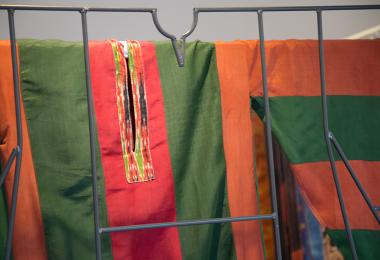
The TIRAZ Walk-In Closet offers a mini portrait of the TIRAZ - Widad Kawar Home for the Arab Dress museum.
The traditional dresses, which are from Jordan, Palestine and Syria, are depicted in actual-size photos and hung from curtain rails.
The form allows visitors to browse and learn about each dress’ background, age, and region of origin.
© Amman Design Week 2016
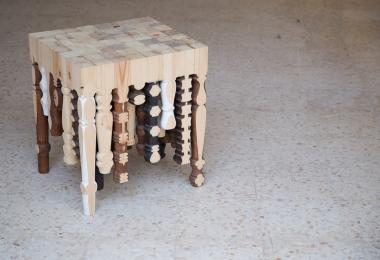
“The Beauty of Imperfection” is an installation comprised of ceiling-mounted pendants made of salvaged wood, and it provides a walkthrough for visitors to appreciate skillful craftsmanship by the creative designers.Aperçu embraced the beauty in the imperfection.
The project was born out of a designer-craftsperson collaboration aimed at exploring the possibilities of upcycling raw materials, namely leftover wood.
The work complements the cracks and knots with clear resin that filled the voids in the wood.
© Amman Design Week 2016
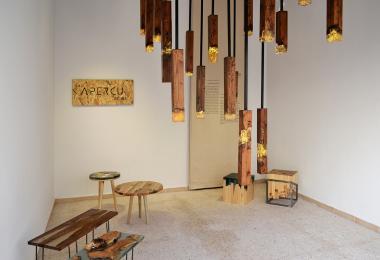
“The Beauty of Imperfection” is an installation comprised of ceiling-mounted pendants made of salvaged wood, and it provides a walkthrough for visitors to appreciate skillful craftsmanship by the creative designers.Aperçu embraced the beauty in the imperfection.
The project was born out of a designer-craftsperson collaboration aimed at exploring the possibilities of upcycling raw materials, namely leftover wood.
The work complements the cracks and knots with clear resin that filled the voids in the wood.
© Amman Design Week 2016
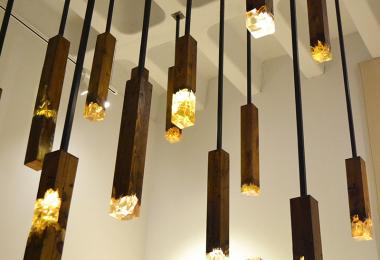
“The Beauty of Imperfection” is an installation comprised of ceiling-mounted pendants made of salvaged wood, and it provides a walkthrough for visitors to appreciate skillful craftsmanship by the creative designers.Aperçu embraced the beauty in the imperfection.
The project was born out of a designer-craftsperson collaboration aimed at exploring the possibilities of upcycling raw materials, namely leftover wood.
The work complements the cracks and knots with clear resin that filled the voids in the wood.
© Amman Design Week 2016
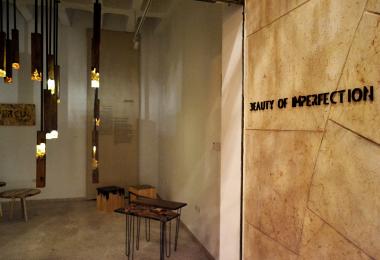
“The Beauty of Imperfection” is an installation comprised of ceiling-mounted pendants made of salvaged wood, and it provides a walkthrough for visitors to appreciate skillful craftsmanship by the creative designers.Aperçu embraced the beauty in the imperfection.
The project was born out of a designer-craftsperson collaboration aimed at exploring the possibilities of upcycling raw materials, namely leftover wood.
The work complements the cracks and knots with clear resin that filled the voids in the wood.
© Amman Design Week 2016
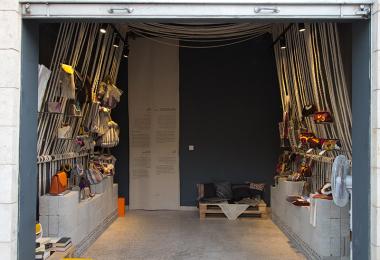
© Amman Design Week 2016
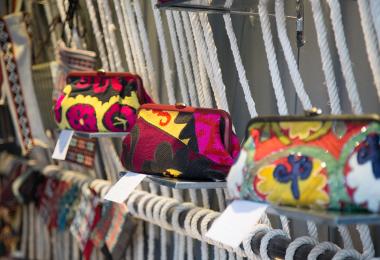
Fabrics extracted from hand-stitched antique pieces found in southern Russia take on a new lease on life. The elements of a B Bag are carefully assembled by hand in Jordan, in some instances by refugees.
© Amman Design Week 2016
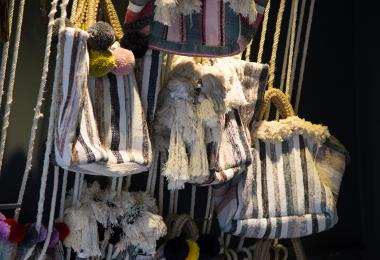
The journey to produce a Nosouj product starts from the villages of Anatolia in Turkey, where Nosouj goes fabric hunting, selecting the best local dokuma fabric that each village has to offer.
© Amman Design Week 2016
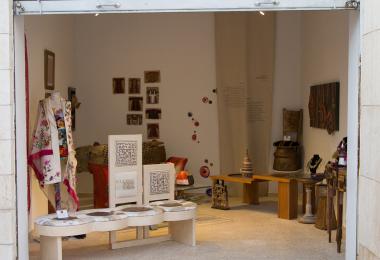
Badr Adduja aims to revitalize traditional handicrafts for a modern lifestyle.
© Amman Design Week 2016
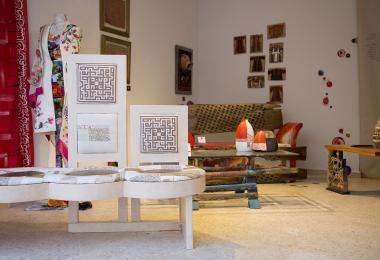
Badr Adduja aims to revitalize traditional handicrafts for a modern lifestyle.
© Amman Design Week 2016
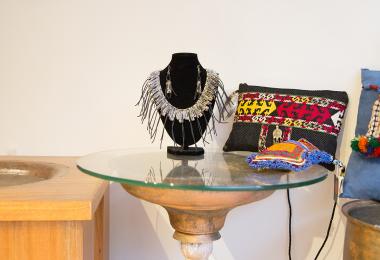
Badr Adduja aims to revitalize traditional handicrafts for a modern lifestyle.
© Amman Design Week 2016
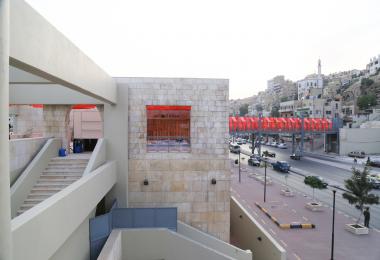
An abandoned bridge that is suspended in time and space was supposed to connect. However, it is left as a monument of emptiness in the city landscape. For this installation, the monument is wrapped with 400 m long orange plastic fabric used in construction sites around the city. The floating orange bridge creates the calling element that celebrates the temporal permanence of construction debris and celebrates once again a gateway to and from the city.
© Amman Design Week 2016
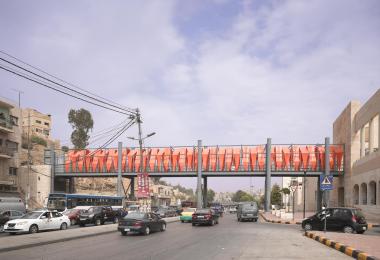
An abandoned bridge that is suspended in time and space was supposed to connect. However, it is left as a monument of emptiness in the city landscape. For this installation, the monument is wrapped with 400 m long orange plastic fabric used in construction sites around the city. The floating orange bridge creates the calling element that celebrates the temporal permanence of construction debris and celebrates once again a gateway to and from the city.
Photo by Roland Halbe
© Amman Design Week 2016
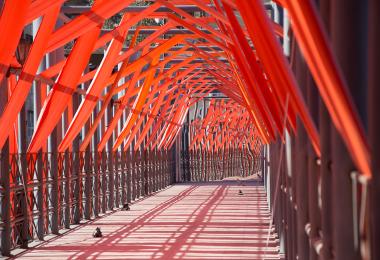
An abandoned bridge that is suspended in time and space was supposed to connect. However, it is left as a monument of emptiness in the city landscape. For this installation, the monument is wrapped with 400 m long orange plastic fabric used in construction sites around the city. The floating orange bridge creates the calling element that celebrates the temporal permanence of construction debris and celebrates once again a gateway to and from the city.
© Amman Design Week 2016
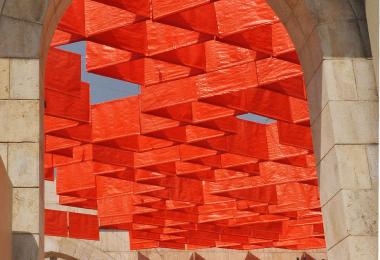
© Amman Design Week 2016
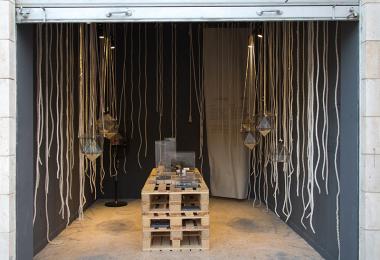
© Amman Design Week 2016
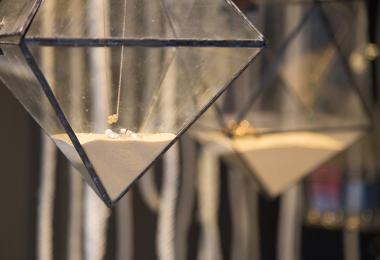
© Amman Design Week 2016
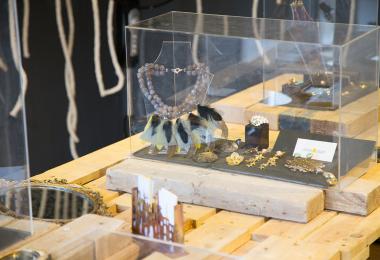
© Amman Design Week 2016
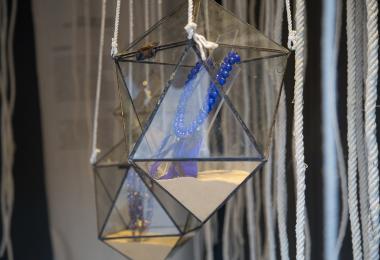
This collection is inspired by nature – the dramatic changes in the colors of leaves and flowers.
© Amman Design Week 2016
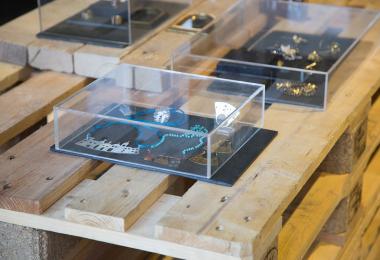
This collection was also inspired by the everlasting stories each seashell and coral reflect childhood stories and games; rock, paper and scribbles.
© Amman Design Week 2016
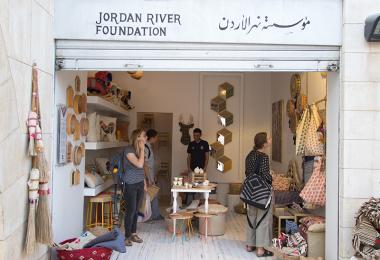
© Amman Design Week 2016
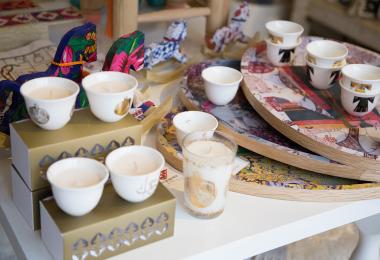
The foundation aims to provide employment opportunities that in turn enhance their livelihoods.
© Amman Design Week 2016
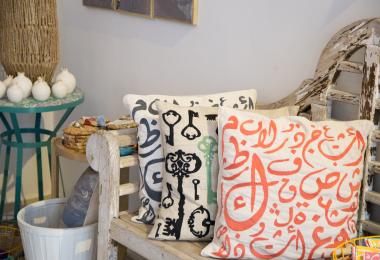
© Amman Design Week 2016
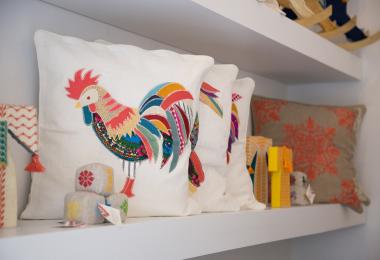
© Amman Design Week 2016
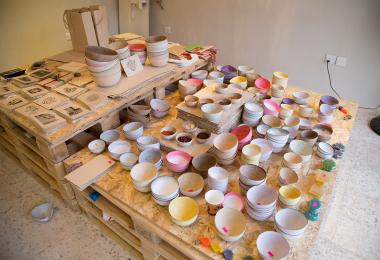
The Iraq Al Amir Women's Association featured their paper bowls, dyed with natural plant-based dyes.
© Amman Design Week 2016
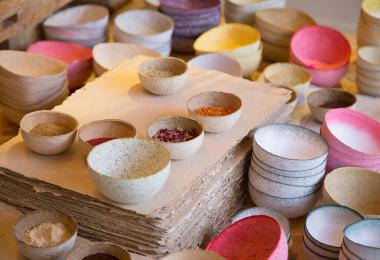
The Iraq Al Amir Women's Association featured their paper bowls, dyed with natural plant-based dyes.
© Amman Design Week 2016
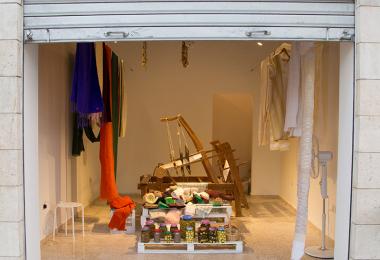
The Iraq Al Amir Women's Association hosted two papermaking and textile workshops. The outcome was a paper dough and natural textiles that require little water and is dyed using natural herbs and spices.
© Amman Design Week 2016
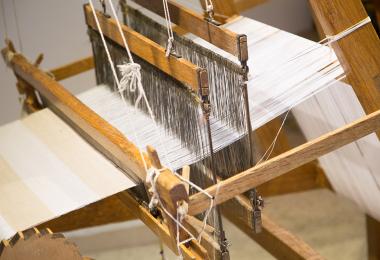
Iraq Al Amir pop-up shop included a loom to demonstrate weaving processes.
© Amman Design Week 2016
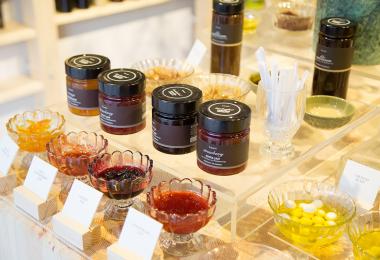
© Amman Design Week 2016
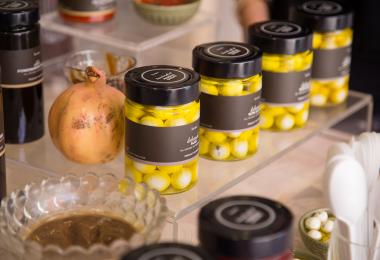
© Amman Design Week 2016
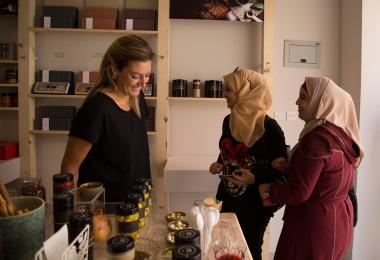
© Amman Design Week 2016
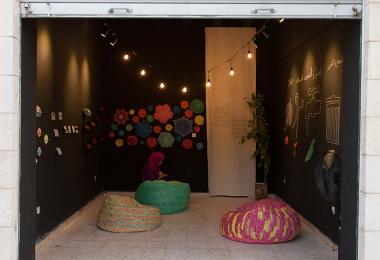
Kees Chic is a fashion brand and a social enterprise that produces urban handmade products out of plastic bags via local, marginalized artisans for the niche market in MENA region.
© Amman Design Week 2016
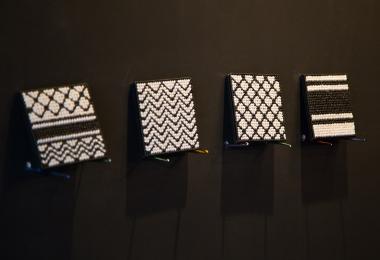
Kees Chic is a fashion brand and a social enterprise that produces urban handmade products out of plastic bags via local, marginalized artisans for the niche market in MENA region.
© Amman Design Week 2016
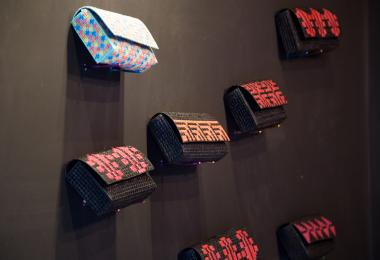
Kees Chic is a fashion brand and a social enterprise that produces urban handmade products out of plastic bags via local, marginalized artisans for the niche market in MENA region.
© Amman Design Week 2016
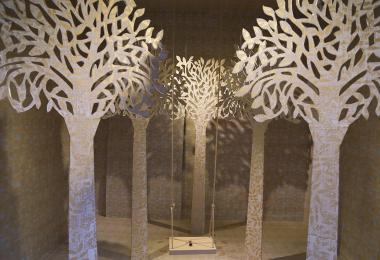
“A society grows great when old men plant trees
whose shade they know they shall never sit in.”
© Amman Design Week 2016
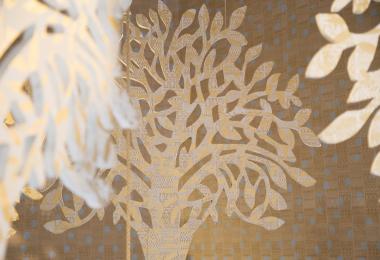
“A society grows great when old men plant trees
whose shade they know they shall never sit in.”
© Amman Design Week 2016
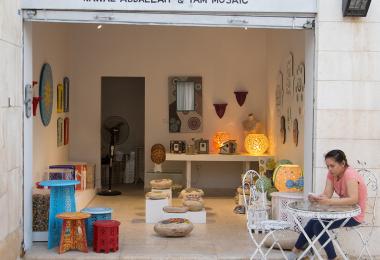
© Amman Design Week 2016
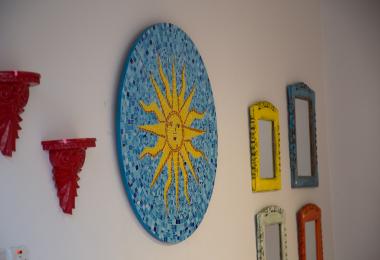
Throughout the years, Taghrid Al-Khasawneh has been an artist that is wholeheartedly and passionately dedicated to creating distinctive, handmade mosaic pieces.
© Amman Design Week 2016
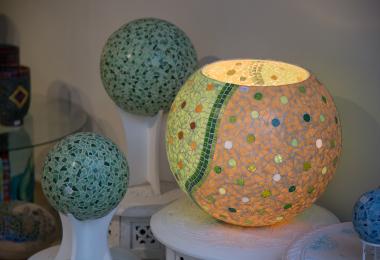
Throughout the years, Taghrid Al-Khasawneh has been an artist that is wholeheartedly and passionately dedicated to creating distinctive, handmade mosaic pieces.
© Amman Design Week 2016
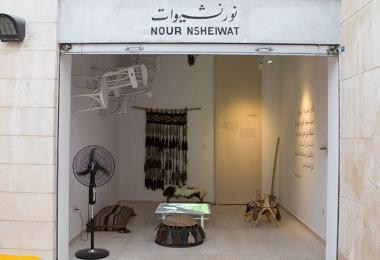
This installation studies the evolution of poufs through history, and realizes unimaginable similarities between ethnic groups. This is an interactive story told by a dining table that puts all together.
© Amman Design Week 2016
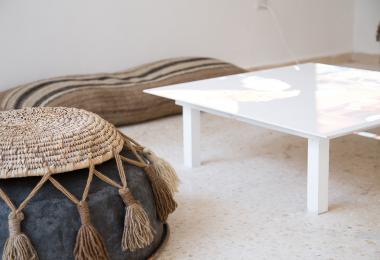
This installation is conceived of as a re-interpretation of the traditional Majles. The work studies the evolution of the traditional poufs and highlights the similarities found in technique and style between different ethnic groups.
This work was born out of a designer-craftsperson collaboration.
© Amman Design Week 2016
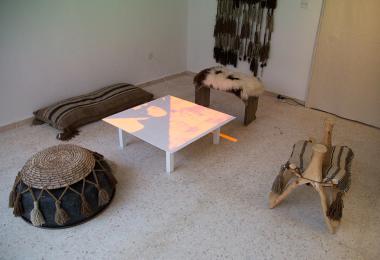
This installation is conceived of as a re-interpretation of the traditional Majles. The work studies the evolution of the traditional poufs and highlights the similarities found in technique and style between different ethnic groups.
This work was born out of a designer-craftsperson collaboration.
© Amman Design Week 2016
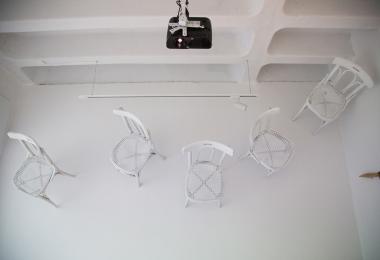
This installation is conceived of as a re-interpretation of the traditional Majles. The work studies the evolution of the traditional poufs and highlights the similarities found in technique and style between different ethnic groups.
This work was born out of a designer-craftsperson collaboration.
© Amman Design Week 2016
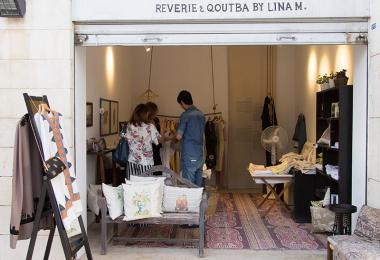
© Amman Design Week 2016
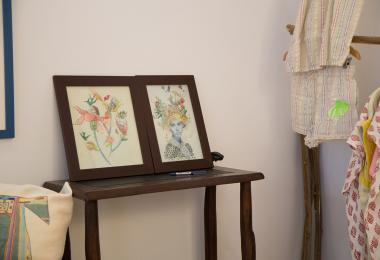
The products are created through a journey, uncovering layer over layer of heritage, printed art, hand embroidery, hand stitching, and a selection of artwork, fabric, threads, and colors.
© Amman Design Week 2016
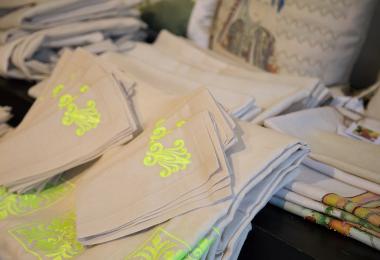
With a particular interest in the art of embroidery, the Reverie team travels around the world to collect luxurious fabrics, used in creating original pieces in the realms of both clothing and tableware.
© Amman Design Week 2016
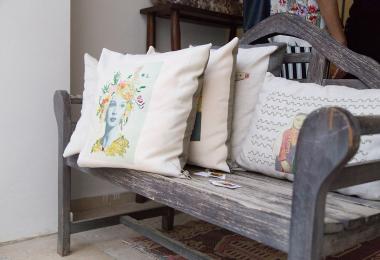
© Amman Design Week 2016
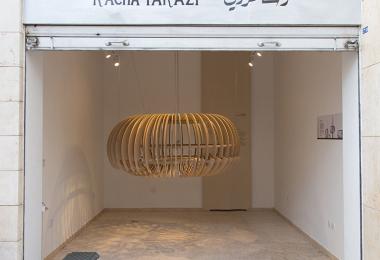
This installation is inspired by Japanese basket art yet made using local materials and handicraft. It was born out of a designer-craftsperson collaboration.
© Amman Design Week 2016
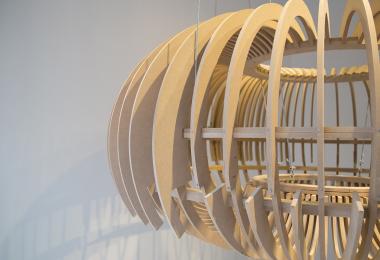
This installation is inspired by Japanese basket art yet made using local materials and handicraft. It was born out of a designer-craftsperson collaboration.
© Amman Design Week 2016
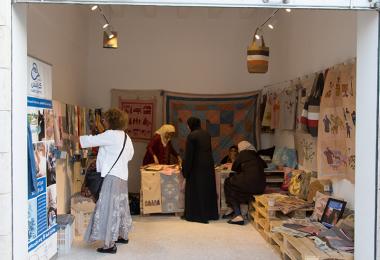
On the shores of the Dead Sea, the Ghor El Safi Women Association for Social experiments with innovative arts and crafts. Carried out by twelve women from farm families residing in the Jordan Valley, many wonderful, creative and innovative ideas are expressed through paintings, natural dyes, embroidery and sewing.
© Amman Design Week 2016
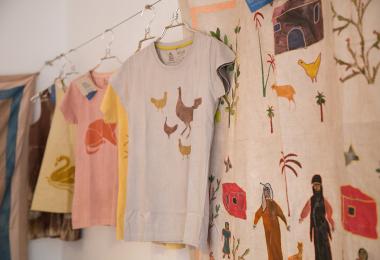
© Amman Design Week 2016
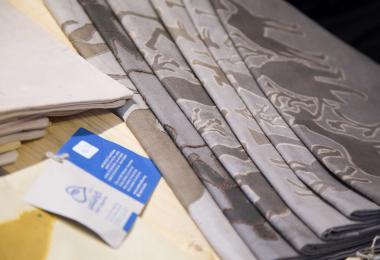
On the shores of the Dead Sea, the Ghor El Safi Women Association for Social experiments with innovative arts and crafts. Carried out by twelve women from farm families residing in the Jordan Valley, many wonderful, creative and innovative ideas are expressed through paintings, natural dyes, embroidery and sewing.
© Amman Design Week 2016
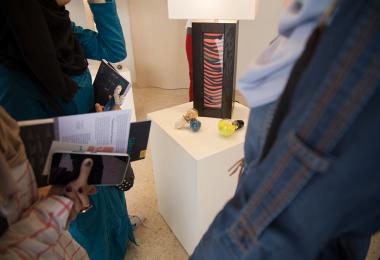
© Amman Design Week 2016
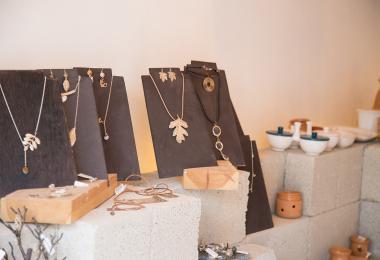
16 handicraft workshops create distinctive, handmade products that are sold at Wild Jordan’s nine Nature Shops, which are dispersed inside and outside Amman. The unique and high-quality products are wonderful as souvenirs and gifts to decorate homes.
© Amman Design Week 2016
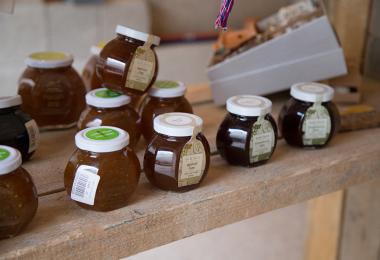
16 handicraft workshops create distinctive, handmade products that are sold at Wild Jordan’s nine Nature Shops, which are dispersed inside and outside Amman. The unique and high-quality products are wonderful as souvenirs and gifts to decorate homes.
© Amman Design Week 2016
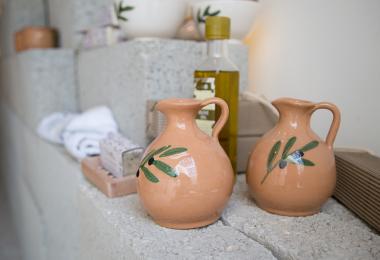
16 handicraft workshops create distinctive, handmade products that are sold at Wild Jordan’s nine Nature Shops, which are dispersed inside and outside Amman. The unique and high-quality products are wonderful as souvenirs and gifts to decorate homes.
© Amman Design Week 2016
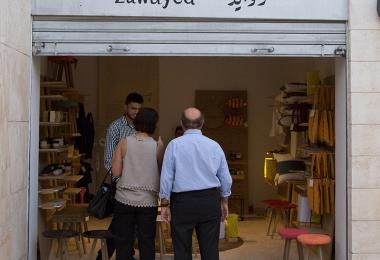
zawayed is an innovative project developed by Mohammad Al Hajji and Liyan Al Jabi in 2010, creating art and products from waste materials.
© Amman Design Week 2016
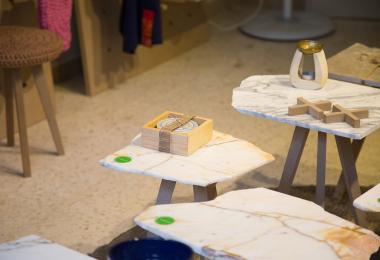
zawayed is an innovative project developed by Mohammad Al Hajji and Liyan Al Jabi in 2010, creating art and products from waste materials.
© Amman Design Week 2016
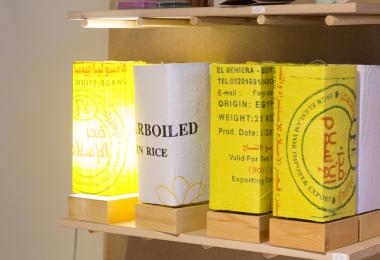
zawayed is an innovative project developed by Mohammad Al Hajji and Liyan Al Jabi in 2010, creating art and products from waste materials.
© Amman Design Week 2016
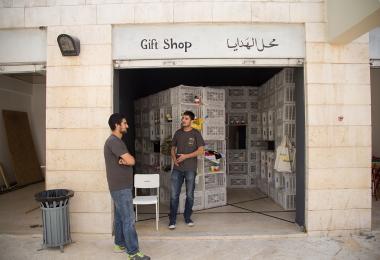
© Amman Design Week 2016
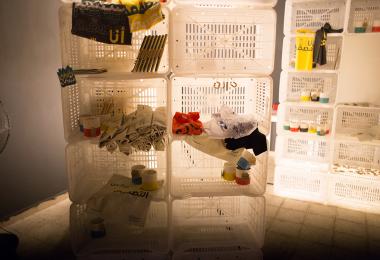
© Amman Design Week 2016
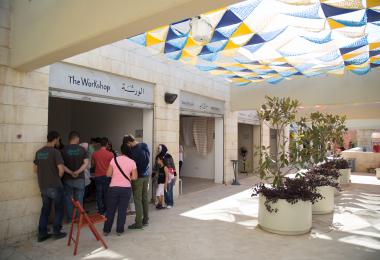
© Amman Design Week 2016
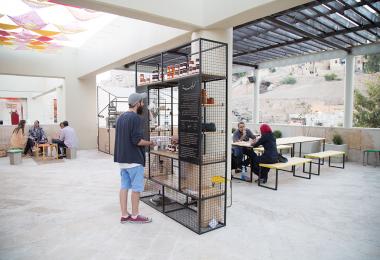
The program celebrates the nostalgia of sociable public spaces, fun street food experiences and the joy of gathering around a dining table with friends and family.
© Amman Design Week 2016
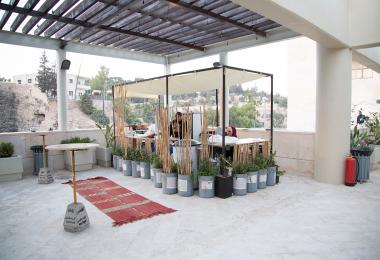
The program celebrates the nostalgia of sociable public spaces, fun street food experiences and the joy of gathering around a dining table with friends and family.
© Amman Design Week 2016
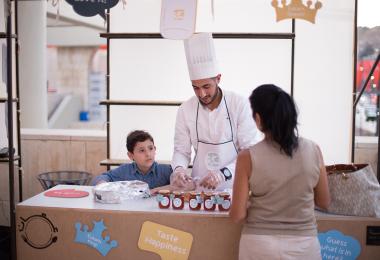
The program celebrates the nostalgia of sociable public spaces, fun street food experiences and the joy of gathering around a dining table with friends and family.
© Amman Design Week 2016
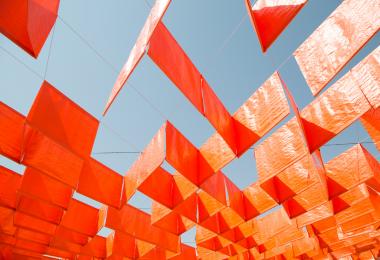
Inspired by local visual patterns, a modular triangular pattern was generated embracing sustainability and recycling to build each canopy with threads collected from waste plastic bags.
© Amman Design Week 2016
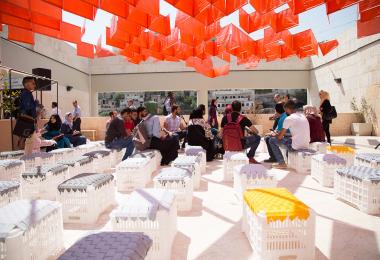
To support local talent, Amman Design Week prepared an exciting entertainment schedule featuring various local talents. Inspired by local visual patterns, a modular triangular pattern was generated embracing sustainability and recycling to build each canopy with threads collected from waste plastic bags.
© Amman Design Week 2016
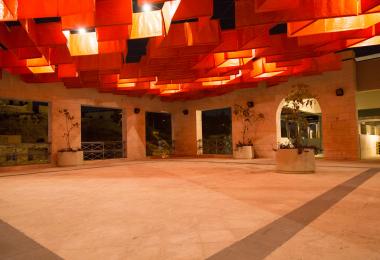
Inspired by local visual patterns, a modular triangular pattern was generated embracing sustainability and recycling to build each canopy with threads collected from waste plastic bags.
© Amman Design Week 2016
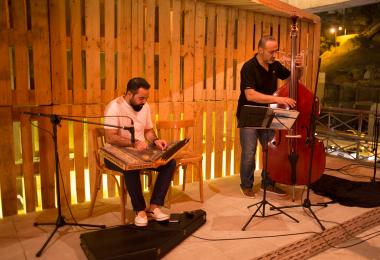
With their ability to effortlessly fuse technical skill with incredible musicality, Humam Eid and Friends have the star potential to serve as an inspiration to generations of musicians to come.
© Amman Design Week 2016
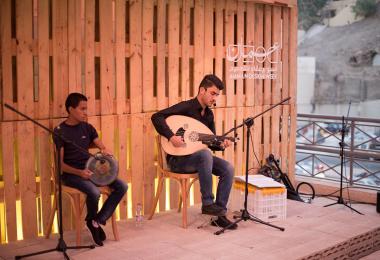
Majoring in Music and specializing in Oud and Piano Playing, Yazan’s soulful playing and singing never fails to elicit chills.
© Amman Design Week 2016
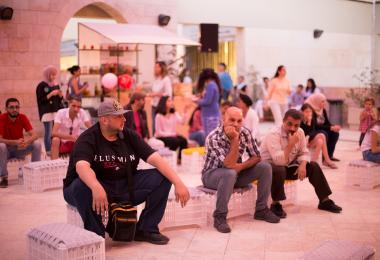
© Amman Design Week 2016
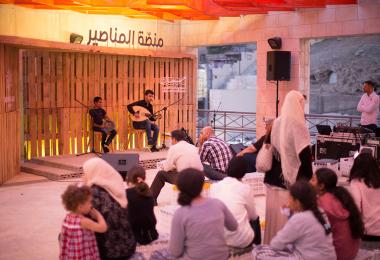
© Amman Design Week 2016
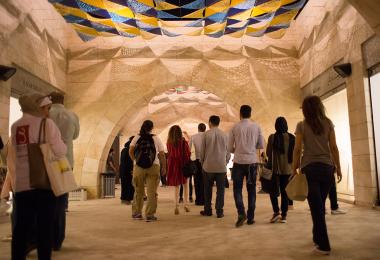
© Amman Design Week 2016
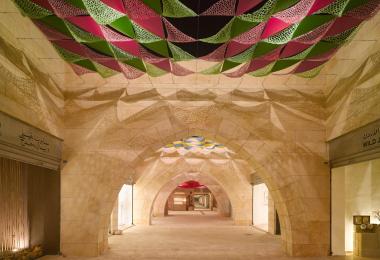
Photo by Roland Halbe
© Amman Design Week 2016
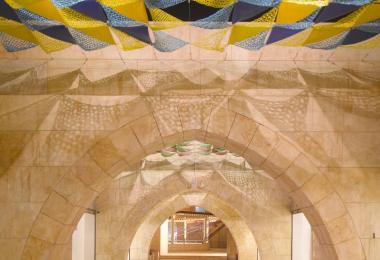
Photo by Roland Halbe
© Amman Design Week 2016
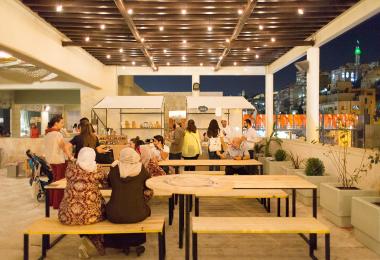
© Amman Design Week 2016
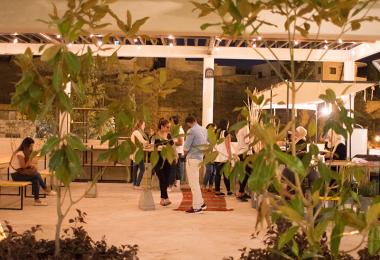
© Amman Design Week 2016
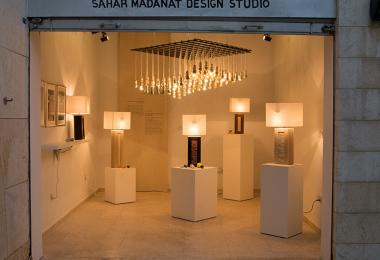
Sahar Madanat transforms the traditional ‘bottle’ sand art, into a useful, relevant and trendy product line of lamps.
© Amman Design Week 2016
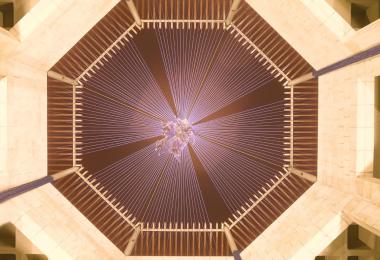
Photo by Roland Halbe
© Amman Design Week 2016
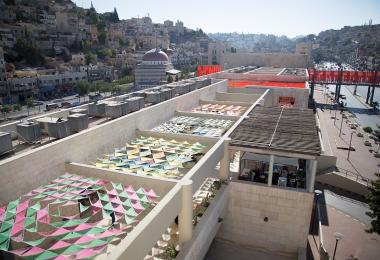
© Amman Design Week 2016